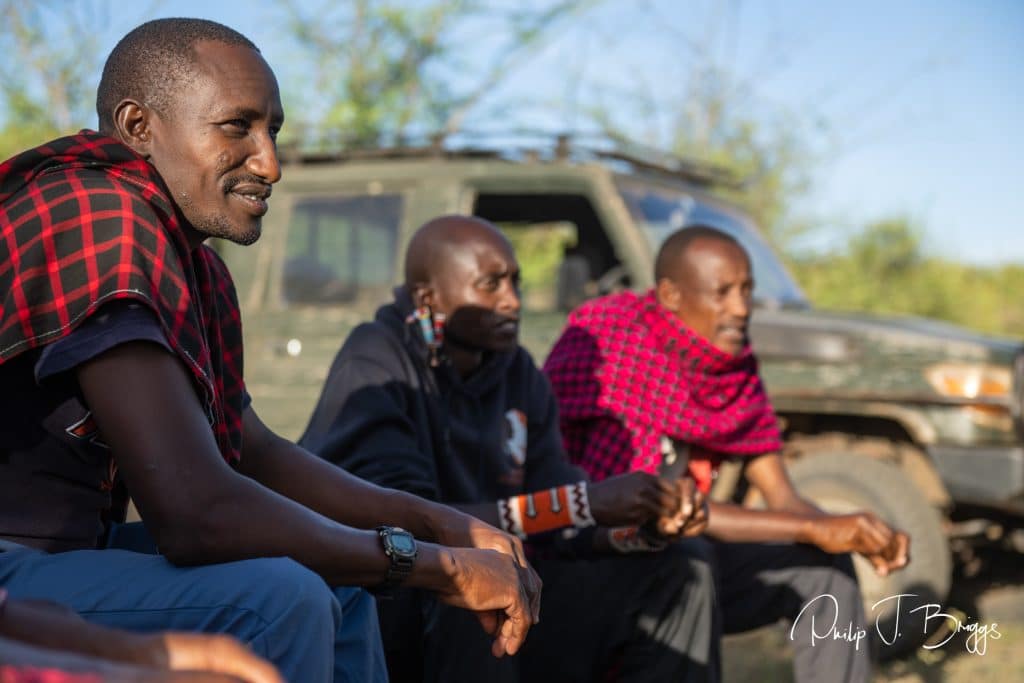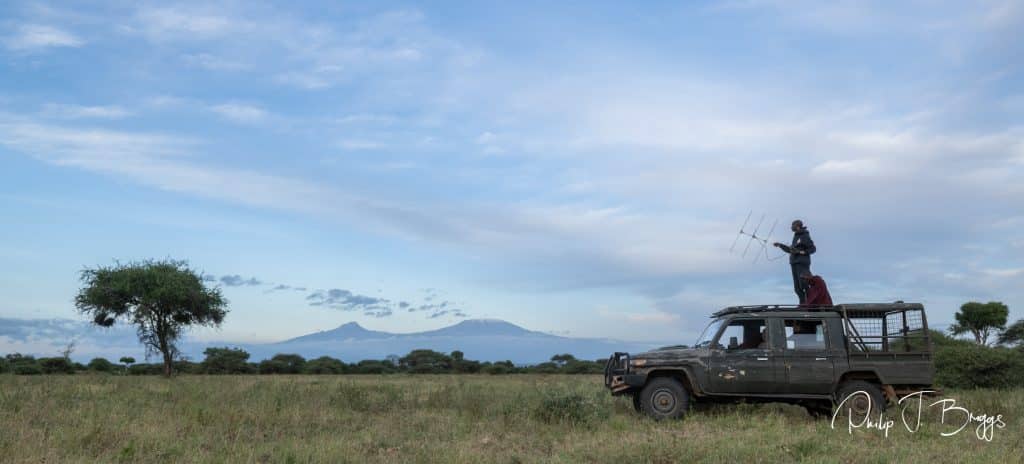Conservation efforts, like protecting lions, resolving conflicts, and restoring landscapes, are often celebrated in the moment. However, without understanding population size and how it changes over time, we can’t know the impact of our actions.
At Lion Guardians, a Lion Recovery Fund grantee, monitoring isn’t a side activity. It’s the backbone of our conservation model. It tells us what’s changing, what’s working, and where we need to go next. Just as importantly, it strengthens trust and collaboration with the local communities who live alongside lions.
Monitoring Is Conservation
Many view monitoring as something to do after the “real” work of conservation. We see it differently. Monitoring is a core part of the conservation process.
Lion Guardians was founded on the principle that people and lions can coexist, but coexistence takes understanding, and understanding begins with information. Our data, gathered daily and over decades, isn’t just about numbers. It’s about relationships between people, predators, and places.
Our monitoring does more than document lion presence. It allows us to:
- Track population trends: We’ve recorded a rebound in lions in human-dominated areas, a rare success story.
- Detect emerging threats: Shifts in behavior or early signs of conflict are picked up before they escalate.
- Measure impact: From mitigation strategies to outreach efforts, monitoring tells us what’s working and where we need to adapt.
- Share knowledge: Our data informs policy, supports research, and is shared through tools like our open-access Knowledge Sharing App.
And perhaps most importantly, monitoring is how we stay embedded in the communities we serve. Every data point is an act of conservation.
Local Knowledge, Scientific Rigor
What makes our approach unique is not just what we monitor, but also how we monitor—and who does it.
Our Guardians are Indigenous Maasai men whose families have lived in this landscape for generations. Each Guardian is responsible for a specific area. Every day, they walk the land, tracking lions, observing the landscape, and preventing conflict. They don’t just collect data, they interpret it. They don’t just report sightings, they guide interventions, calm tensions, and protect both people and predators.
During our annual lion survey, this daily routine expands into a rigorous scientific survey. Guardians record their movements and report fresh lion signs to vehicle-based follow-up teams, who then join the Guardians to locate, identify, and photograph each individual lion. These efforts often involve nights in the field, waiting patiently for an opportunity to identify the individual lions present.
Without the expertise of the Guardians, we simply wouldn’t find the lions. Science alone wouldn’t be enough; local knowledge makes it possible.
A Model for Lasting Success
Monitoring in conservation is rarely glamorous. It’s slow, steady, and often invisible. But it works, when it’s trusted, embedded, and shared.
When our Guardians walk the landscape, over 47,000 km on foot in just three months during our last annual lion survey, they do far more than collect data. They’re preventing conflict by being present. They’re mentoring young herders. They’re listening to local concerns. They’re interpreting tracks and signs, passing on stories about lions, and strengthening community stewardship. Our monitoring is not a “parachute survey” with outside researchers dropping in for a snapshot. It is conservation in motion, step by step, footprint by footprint. Every GPS point logged where lions interact with livestock or wild prey becomes a chance for dialogue. Every lion identified strengthens a network of understanding across the landscape, and every moment on patrol is an opportunity to protect.
Monitoring is how we conserve. It’s how we adapt, how we listen, and how we grow. Most of all, it’s how we walk, literally and figuratively, toward a shared future where both people and lions thrive.




